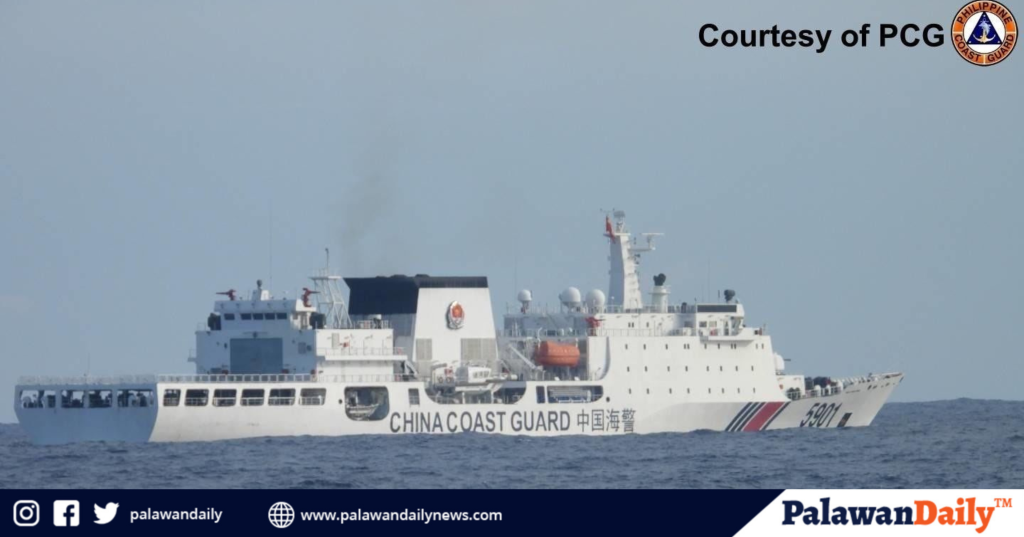The Philippine government has intensified its monitoring of China’s Coast Guard Vessel 5901, dubbed the “Monster Ship,” as it continues to operate within the country’s exclusive economic zone (EEZ), raising fresh tensions in the West Philippine Sea.
Officials have characterized this as part of Beijing’s ongoing campaign of intimidation and territorial encroachment.
Jonathan Malaya, Assistant Director General of the National Security Council (NSC), confirmed during a televised briefing on Monday that the Philippine Coast Guard and military assets have been actively tracking and shadowing the vessel.
“Hindi natin ito pinapabayaan lang, minamanmanan natin. In fact, we are shadowing it,” Malaya said.
“Nandyan pa rin hanggang ngayon ang BRP Cabra na syang nagbabantay at sinusundan ang 5901 sa anumang galaw nito, at meron din tayong ibang assets gaya ng eroplano mula Coast Guard at iba pang mga assets ng ating Northern Luzon Command, ng Area Task Force North ng National Task Force West Philippine Sea at hindi natin ito pinababayaan.”
The NSC has reassured local fishing communities in Zambales and Palawan that their livelihoods will not be disrupted despite the presence of the Chinese vessel. Malaya also urged fishermen to continue their activities without fear, stressing that the government is committed to their safety.
“Ang mensahe namin sa kanila, ituloy ang pangingisda ninyo walang nagbago at hindi titigil ang pamahalaan na magbigay ng suporta sa inyo notwithstanding the presence of 5901,” Malaya said.
“Papaigtingin pa natin ang presensya ng ating BFAR at ng Coast Guard para suportahan ang ating mangingisda,” he added.
This once again highlights a broader pattern of Chinese maritime assertiveness that Manila has repeatedly challenged through diplomatic protests and public denunciations. While officials stress the importance of maintaining a robust presence in the EEZ, questions about the broader strategic implications remain unanswered.
Adding to the complexity is the recent discovery of an underwater drone near Masbate’s coastline. Malaya noted that the province’s strategic position, adjacent to the San Bernardino Strait, may explain the drone’s deployment.
“Itong Masbate ay nasa bungad ng San Bernardino Strait. Itong San Bernardino Strait naman ay napakastrategic, napakaimportanteng daluyan ito ang access ng Pacific Ocean papasok sa ating archipelago,” he said.
“So there are speculations na that’s the purpose of an armed drone, para i-map out ang areang ‘yun,” he added.
While initial suspicions point to China, Malaya cautioned against drawing premature conclusions.
“Medyo maaga pa para mailabas ng pamahalaan ang resulta ng forensic investigation. As of now hindi pa tapos ito, there is no definitive conclusion yet,” he said.
The developments come at a time when the Philippines is recalibrating its foreign policy, balancing its ties with both China and its traditional ally, the United States.
As the nation navigate these waters—both literally and diplomatically—the stakes for maintaining sovereignty and safeguarding livelihoods have never been higher.
